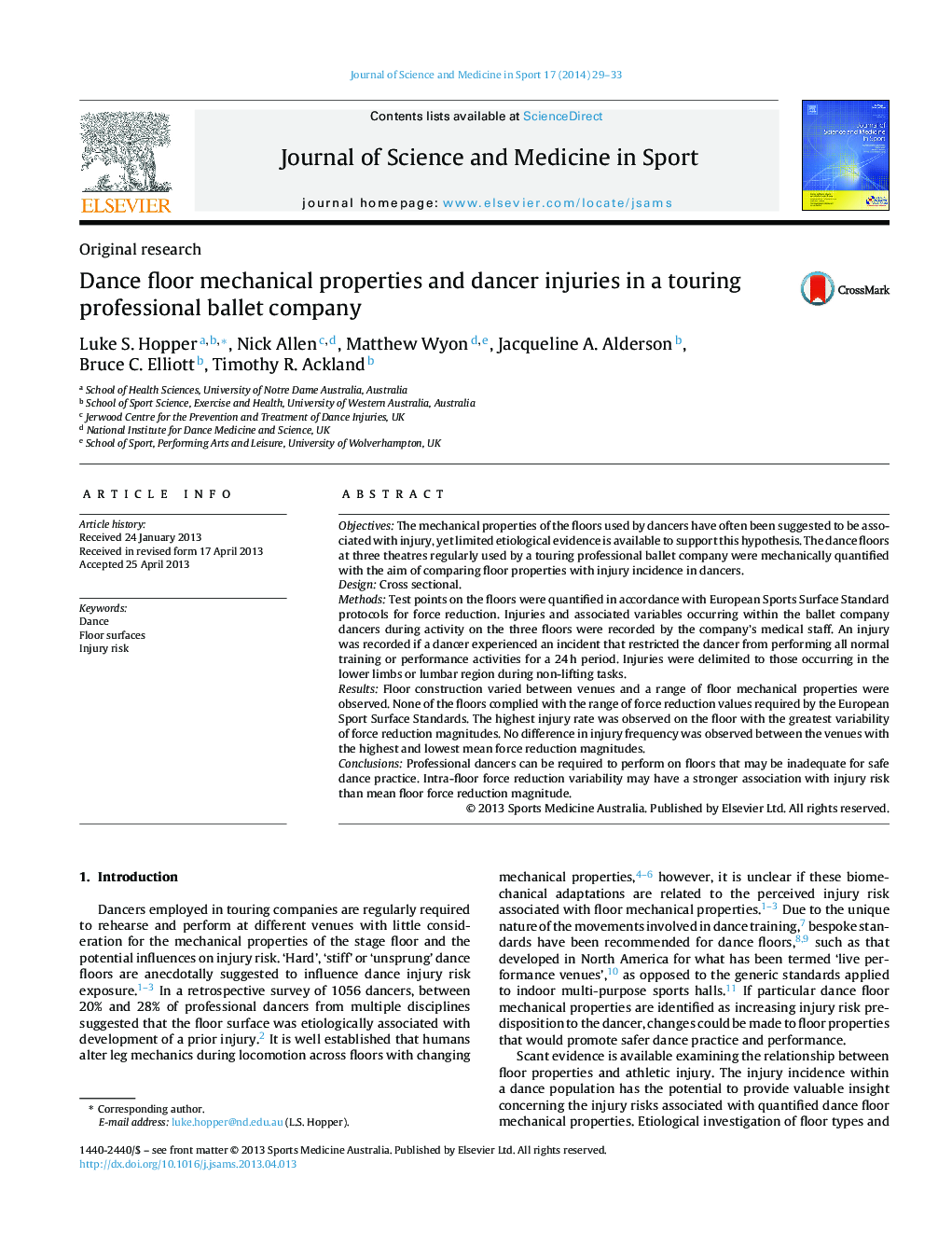| Article ID | Journal | Published Year | Pages | File Type |
|---|---|---|---|---|
| 2700597 | Journal of Science and Medicine in Sport | 2014 | 5 Pages |
ObjectivesThe mechanical properties of the floors used by dancers have often been suggested to be associated with injury, yet limited etiological evidence is available to support this hypothesis. The dance floors at three theatres regularly used by a touring professional ballet company were mechanically quantified with the aim of comparing floor properties with injury incidence in dancers.DesignCross sectional.MethodsTest points on the floors were quantified in accordance with European Sports Surface Standard protocols for force reduction. Injuries and associated variables occurring within the ballet company dancers during activity on the three floors were recorded by the company's medical staff. An injury was recorded if a dancer experienced an incident that restricted the dancer from performing all normal training or performance activities for a 24 h period. Injuries were delimited to those occurring in the lower limbs or lumbar region during non-lifting tasks.ResultsFloor construction varied between venues and a range of floor mechanical properties were observed. None of the floors complied with the range of force reduction values required by the European Sport Surface Standards. The highest injury rate was observed on the floor with the greatest variability of force reduction magnitudes. No difference in injury frequency was observed between the venues with the highest and lowest mean force reduction magnitudes.ConclusionsProfessional dancers can be required to perform on floors that may be inadequate for safe dance practice. Intra-floor force reduction variability may have a stronger association with injury risk than mean floor force reduction magnitude.
